Homepage
Salute Globale e Intelligenza Artificiale
Al TG2 Costume & Società il prof. Roberto Cazzolla Gatti e la dott.ssa Alessandra Mistral De Pascali spiegano come l'IA sta aiutando la scienza a studiare la salute di ecosistemi, uomo e altre specie. Servizio di Christiana Ruggieri
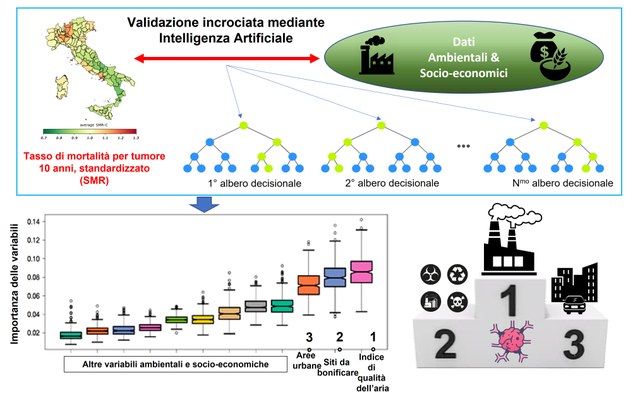
The spatial association between environmental pollution and long-term cancer mortality in Italy highlighted by A.I.
Today, cancer represents the second leading cause of death in the world after cardiovascular diseases. In the last decades of cancer research, lifestyle - especially physical inactivity, poor diet, obesity, alcoholism, and smoking - and random or genetic factors have been identified as major causes in the development of tumors. Nevertheless, there is a growing understanding of how environmental pollution is among the main factors inducing cancer proliferation. To further investigate this issue, a group of scholars from the University of Bologna, the University of Bari, and the CNR (National Research Council) used advanced artificial intelligence methods to analyze the relationship between cancer mortality, socio-economic factors, and environmental pollution sources in Italy on a regional and provincial level. The results and the analysis of the investigation have been published in the journal Science of the Total Environment, while the entire ten-year dataset with cancer mortality rates for all Italian municipalities has been published in the journal Nature Scientific Data, an open-access and user-friendly journal.
Go to page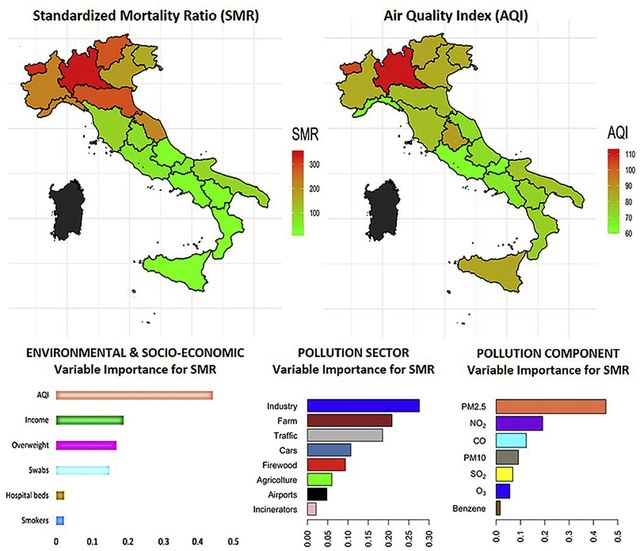
Artificial Intelligence reveals that pollution is strongly related to COVID-19 deaths in Italy
Thanks to artificial intelligence a new study revealed how prolonged exposure to air pollution (especially to fine particles) has contributed to SARS-CoV-2 mortality and infections in Italy. That air pollution can increase the risk of respiratory diseases by enhancing susceptibility to viral and bacterial infections is nothing new. Some studies have suggested that small particles in the air facilitate the spread of viruses and even the new coronavirus, in addition to direct person-to-person infection. However, despite some preliminary hypotheses, the effects of prolonged exposure to particulates and other atmospheric contaminants on SARS-CoV-2 have not been studied. An international team made up of biologists and physicists showed, in the first scientific study concerning the Italian situation published after having also passed the peer-review phase, that at the national level there is a significant statistical association between prolonged exposure to air pollutants and the severity of the pandemic effects (mortality and infectivity) of the SARS-CoV-2 virus.
Go to page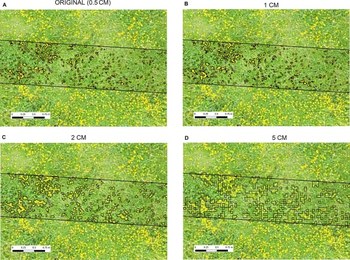
A novel A.I. approach for surveying flowers as a proxy for bee pollinators using drone images
The abundance and diversity of plants and insects are important indicators of biodiversity, overall ecosystem health and agricultural production. Bees in particular are interesting indicators as they provide a key ecosystem service in many agricultural crops. Worldwide, habitat loss and fragmentation, agricultural intensification and climate change are important drivers of plant and bee decline. Monitoring of plants and bees is a crucial first step to safeguard their diversity and the services they provide but traditional in situ methods are time consuming and expensive. Remote sensing and Earth observation have the advantages that they can cover large areas and provides repeated, spatially continuous and standardized information. However, to date it has proven challenging to use these methods to assess small-scaled species-level biodiversity components with this approach. Here we surveyed bees and flowering plants using conventional field methods in 30 grasslands along a land-use intensity gradient in the Southeast of the Netherlands. We took RGB (true colored Red-Green–Blue) images using an Unmanned Aerial Vehicle (UAV) from the same fields and tested whether remote sensing can provide accurate assessments of flower cover and diversity and, by association, bee abundance and diversity. We explored the performance of different machine learning methods: Random Forest (RF), Neural Networks (NNET) and Support-Vector Machine (SVM).
Go to page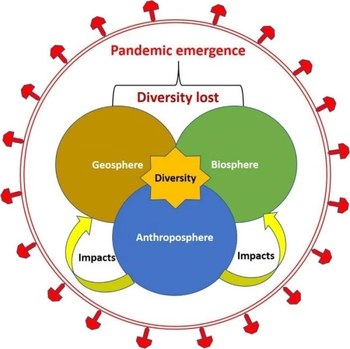
The interconnection between human, species and environmental health explains SARS-CoV-2 emergence
With the use of a multidisciplinary framework as an analytical tool to understand the relationships between diversity and the COVID-19 pandemic. “We propose to look at the COVID-19 pandemic,” said Dr. Roberto Cazzolla Gatti, the leading author of the paper. “As the result of our species’ negative impacts on the diversity of the Geosphere and Biosphere that may also have effects on the diversity of the Anthroposphere.”
If we want to learn how to deal with the COVID-19 pandemic—suggests the paper—we have to embrace the complexity of this global phenomenon and capture interdependencies across scales and contexts. Yet, we still lack systematic approaches that we can use to deal holistically with the pandemic and its effects. The team of biologists, anthropologists, philosophers of science, environmental economists and geographers, introduced a framework that highlights the systemic nature of the COVID-19 pandemic as a self-regulating and evolving system comprising three spheres: the Geosphere, the Biosphere, and the Anthroposphere.
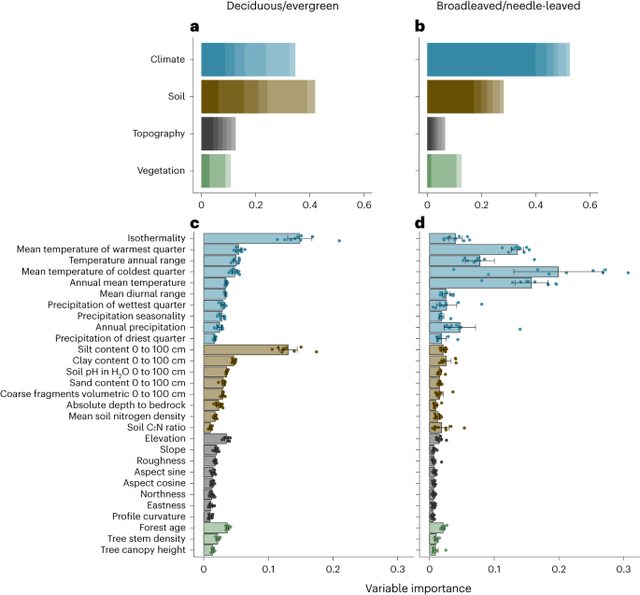
The global distribution of tree leaf type as predicted by an A.I. model
Understanding what controls global leaf type variation in trees is crucial for comprehending their role in terrestrial ecosystems, including carbon, water and nutrient dynamics. Yet our understanding of the factors influencing forest leaf types remains incomplete, leaving us uncertain about the global proportions of needle-leaved, broadleaved, evergreen and deciduous trees. To address these gaps, we conducted a global, ground-sourced assessment of forest leaf-type variation by integrating forest inventory data with comprehensive leaf form (broadleaf vs needle-leaf) and habit (evergreen vs deciduous) records. We found that global variation in leaf habit is primarily driven by isothermality and soil characteristics, while leaf form is predominantly driven by temperature. Given these relationships, we estimate that 38% of global tree individuals are needle-leaved evergreen, 29% are broadleaved evergreen, 27% are broadleaved deciduous and 5% are needle-leaved deciduous. The aboveground biomass distribution among these tree types is approximately 21% (126.4 Gt), 54% (335.7 Gt), 22% (136.2 Gt) and 3% (18.7 Gt), respectively. We further project that, depending on future emissions pathways, 17–34% of forested areas will experience climate conditions by the end of the century that currently support a different forest type, highlighting the intensification of climatic stress on existing forests.
Go to page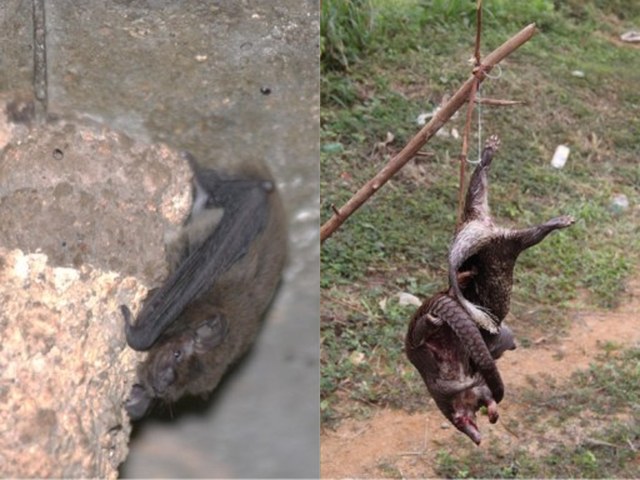
Protect wildlife now to protect us from future pandemics
Pandemic situations require a correct understanding of our impacts on wildlife conservation, which would also provide benefits for our species. The biologists Roberto Cazzolla Gatti and Manfredo Turcios-Casco discussed some of the repercussions that SARS-CoV-2 pandemic may have on wildlife. They propose four very relevant actions that should be taken into account to protect and conserve wildlife in this pandemic era.
According to their four urgent initiative that policy-makers need to make concrete, wildlife “wet” markets must close, human interference with wildlife must be reduced, bats and pangolins must be conserved and not blamed, and Chinese traditional medicine must be more controlled.
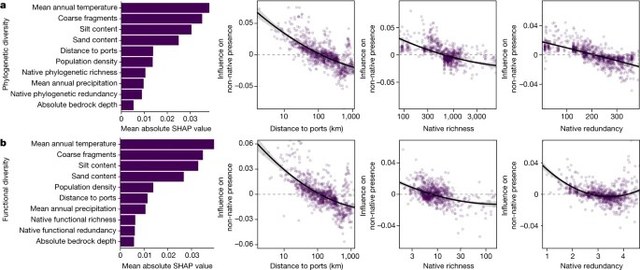
A.I. shows that anthropogenic drivers are more important than native diversity in determining invasion occurrence
Determining the drivers of non-native plant invasions is critical for managing native ecosystems and limiting the spread of invasive species. Tree invasions in particular have been relatively overlooked, even though they have the potential to transform ecosystems and economies. Here, leveraging global tree databases5,6,7, we explore how the phylogenetic and functional diversity of native tree communities, human pressure and the environment influence the establishment of non-native tree species and the subsequent invasion severity. Random forest models were used primarily to assess variable importance and influence. Specifically, we used Shapley additive explanations (SHAP) values to infer variable importance in the model outcome. SHAP values are a machine learning analogue of partial regression, quantifying the relative importance of each variable on the outcome, accounting for all other variables in the model.
Go to page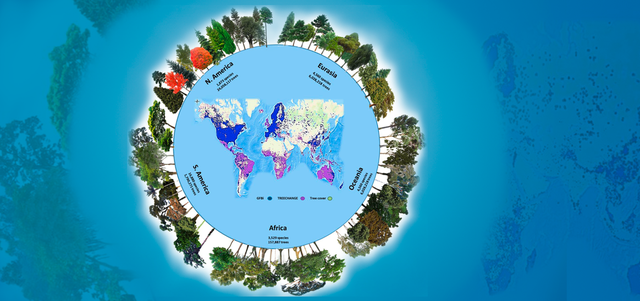
Unveling the number of tree species on Earth
The global estimate is about 14% higher than the current number of known tree species. Most of the undiscovered species are likely to be rare, with very low populations and limited spatial distribution, the study shows.
That makes the undiscovered species especially vulnerable to human-caused disruptions such as deforestation and climate change, according to the study authors, who say the new findings will help prioritize forest conservation efforts.
For the study, the researchers combined tree abundance and occurrence data from two global datasets -- one from the Global Forest Biodiversity Initiative and the other from TREECHANGE -- that use ground-sourced forest-plot data. The combined databases yielded a total of 64,100 documented tree species worldwide, a total similar to a previous study that found about 60,000 tree species on the planet.

